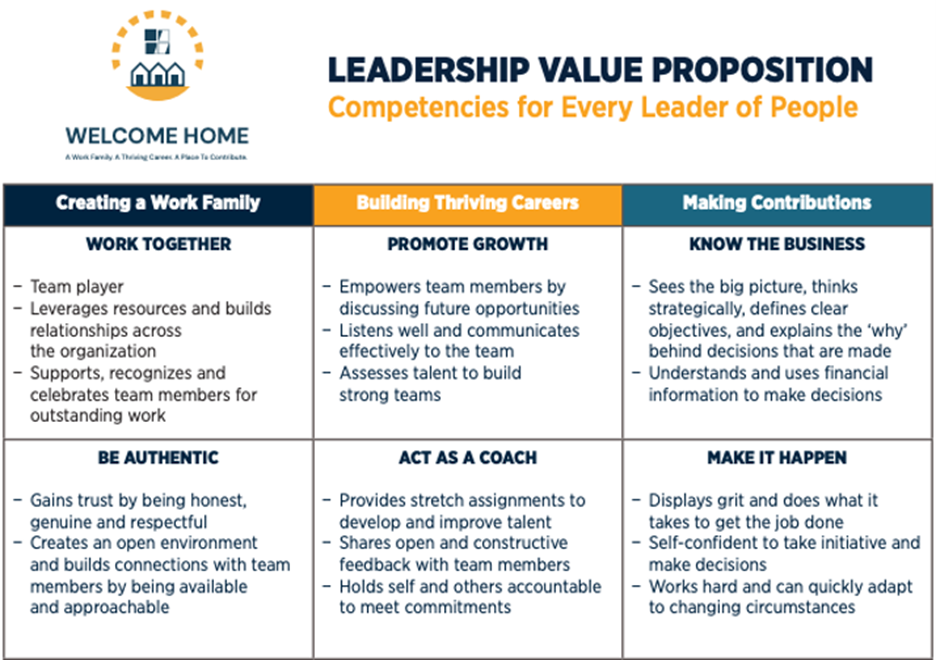Top Leadership Training Programs For Executives
It’s fascinating to consider that many executives today are turning to top-tier leadership training programs that go beyond conventional learning modules. Think about how transformational it might be for a seasoned leader to return with a new arsenal of skills after a week-long program at a prestigious institution. Such programs are not just about refining existing abilities, but also about preparing executives for the novel challenges brought on by rapid market changes.
Top leadership training programs have evolved dramatically over the decades, shifting from traditional lectures to immersive, hands-on experiences. In fact, a study by the Corporate Leadership Council found that companies spending on executive training see a 14% increase in organizational performance. These programs often incorporate state-of-the-art strategies and innovative thinking exercises, ensuring that executives are not merely managers but visionary leaders.

Top leadership training programs for executives
Leadership training programs for executives are essential for boosting their abilities. These programs teach important skills such as strategic thinking and effective communication. Participants often engage in interactive workshops where they practice real-life scenarios. This experiential learning style helps them grasp concepts faster. Plus, it fosters collaboration among peers from various industries, enriching the experience even further.
Many top-tier institutions offer leadership training programs specifically for executives. Some of these programs are provided by Harvard, Stanford, and Wharton. These institutions focus on cutting-edge leadership styles. They also offer personalized coaching to address individual strengths and weaknesses. By attending these, executives can stay ahead in the competitive business world.
Executives often benefit immensely from attending such programs. Improved leadership skills lead to better team performance and boosted morale. The programs also help in decision-making and conflict resolution. This is because they provide tools and techniques to tackle complex situations. The impact is visible not just in the boardroom but across the entire organization.
Selecting the right training program depends on the individual’s goals. It’s crucial to consider the program’s curriculum and faculty expertise. Feedback from past participants can also offer valuable insights. Additionally, weighing program costs against potential benefits is wise. Researching these aspects ensures the best choice for career advancement.
The benefits of executive leadership training programs
Executive leadership training programs offer numerous advantages. One major benefit is the enhancement of decision-making skills. Executives learn to analyze situations effectively and make informed choices. This leads to better outcomes for their organizations. Moreover, it helps in avoiding potential pitfalls.
Another advantage is the development of effective communication skills. These programs teach executives how to convey their ideas clearly and confidently. Understanding how to communicate with diverse teams is crucial in today’s global market. It also improves team collaboration. As a result, projects are completed more efficiently and harmoniously.
Leadership training also focuses on strategic thinking. Executives are taught to view challenges from different angles. This helps them devise creative solutions to complex problems. It pushes them to think outside the box. Therefore, companies benefit from innovative strategies.
Lastly, these programs aid in personal growth. Executives often experience increased self-awareness and confidence. They learn to manage stress and prioritize tasks effectively. This not only benefits their professional lives but also enhances their personal well-being. Investing in such programs truly enriches an executive’s overall development.
Key components of excellent leadership training
One important component of effective leadership training is experiential learning. This method allows leaders to practice real-world scenarios. They get to apply theory in action, which enriches their understanding. Experiential learning often involves role-playing activities. It cements the concepts in the participants’ minds.
Another crucial part of leadership training is mentoring. A mentor provides guidance based on personal experiences. They offer valuable insights and advice to budding leaders. Mentoring helps build strong relationships and networks. This support system is vital for long-term leadership success.
Leadership training must include problem-solving exercises. These exercises encourage critical thinking and creativity. Leaders learn to tackle challenges with confidence and skill. Problem-solving activities also promote team collaboration. Teams work together to find the best solutions.
Finally, feedback is an essential element in leadership development. Feedback provides constructive insights into a leader’s strengths and weaknesses. Participants can use this information to improve continuously. It fosters a culture of open communication and growth. Regular feedback sessions ensure participants stay on the right path.
The impact of leadership training on executive performance
Leadership training significantly influences an executive’s performance. Well-trained executives make better decisions, benefiting the entire organization. With clear goals and a strategic vision, they lead teams more effectively. Enhanced performance also boosts their confidence. As a result, they become role models for others.
Leadership training programs emphasize excellent communication skills. Executives communicate their ideas with clarity and efficiency. Improved communication reduces misunderstandings and workplace conflicts. It fosters a positive, cooperative environment. This unified atmosphere is crucial for achieving organizational success.
Critical thinking is another skill honed through leadership training. Executives learn to analyze situations calmly and identify the best solutions. It equips them to handle challenging scenarios with ease. Quick, informed decisions can be a game-changer for a business. It also sets a precedent for others to follow.
Leadership training encourages adaptability. Executives face rapidly changing markets and technologies daily. Training equips them to stay agile and adaptable, ensuring they lead effectively in any situation. This adaptability drives innovation and growth. In turn, the organization thrives in a competitive landscape.
Feedback systems are integral to training programs. Constructive criticism allows executives to refine their skills. They use feedback to adjust their strategies and enhance their leadership style. This iterative learning process contributes to continuous performance improvement. Teams and organizations benefit from this growth.
Case studies of successful executive training programs
One example of a successful executive training program comes from a tech giant. They implemented a leadership program specifically designed to foster innovation. Executives participated in workshops to explore emerging technologies and develop strategies for future challenges. After completion, the company observed a 20% increase in new product ideas. This boost in creativity set the company apart from its competitors.
A multinational corporation in the finance sector also benefited from leadership training. Their program focused on risk management and strategic decision-making. Executives learned to evaluate potential risks and make informed choices quickly. Following this training, the company experienced fewer financial setbacks. The strengthened decision-making skills led to increased stability and growth.
In the healthcare industry, a renowned hospital launched a leadership program targeting efficient communication. The initiative aimed at improving patient care by enhancing staff communication skills. Executives attended seminars and engaged in role-playing exercises. As a result, patient satisfaction scores increased significantly. The hospital quickly became a leader in patient care standards.
| Company | Industry | Focus Area | Result |
|---|---|---|---|
| Tech Giant | Technology | Innovation | 20% increase in product ideas |
| Finance Corp | Finance | Risk Management | Fewer financial setbacks |
| Renowned Hospital | Healthcare | Communication | Higher patient satisfaction |
Another interesting case study involves a global retail chain that prioritized leadership around sustainability. Their executive training included workshops on sustainable business practices. As a result, the executives devised eco-friendly strategies that improved the brand image. This initiative led to higher customer loyalty and better environmental impact. Making sustainability a core focus improved both company profits and public perception.
Choosing the right leadership training program for your needs
Selecting the right leadership training program is crucial for executives. The first step is to identify your specific goals. Are you looking to improve communication skills or boost strategic thinking? Pinpointing what you need will help narrow down your options. Clear goals make it easier to find a program that aligns with your aims.
Evaluating the curriculum is also essential. Review the course content to ensure it covers relevant topics. A good program should offer a mix of theoretical knowledge and practical exercises. This blend ensures you get a well-rounded education. Additionally, find out if the program includes guest lectures or industry visits.
Instructors play a significant role in the effectiveness of a program. Look for programs led by experienced professionals. Their real-world insights can add immense value. It’s also helpful to check their track record with other executives. Effective instructors can make a big difference in your learning experience.
| Factor | Considerations |
|---|---|
| Goals | Communication, Strategic Thinking, etc. |
| Curriculum | Theoretical Knowledge, Practical Exercises |
| Instructors | Experience, Track Record |
| Feedback | Past Participants, Reviews |
Feedback from past participants can be insightful. Read reviews or testimonials to gauge the program’s effectiveness. These can provide a glimpse into what you can expect. Positive feedback often indicates a successful program. However, pay attention to any recurring issues mentioned by multiple participants.
Finally, consider the logistics and cost. Look at the schedule to ensure it fits with your commitments. Compare the costs with the benefits you will gain. Sometimes investing a bit more can yield better results. Careful consideration of these factors will help you choose the best program for your needs.
Final Thoughts on Leadership Training Programs
Leadership training programs are vital in shaping effective executives. They equip leaders with essential skills, from strategic thinking to communication. The benefits are not only limited to the individuals but extend to the entire organization, fostering growth and innovation. As businesses face ever-changing challenges, well-trained leaders are increasingly necessary.
Choosing the right program involves understanding your goals and evaluating the program’s components. Important aspects include the curriculum, instructors, and feedback from past participants. A carefully selected program can lead to significant improvements in personal and professional performance. Ultimately, investing in the right leadership training program is a step toward long-term success.

